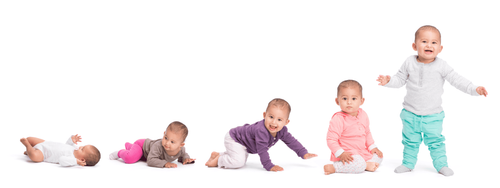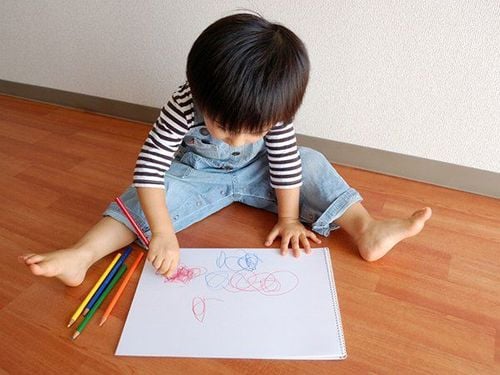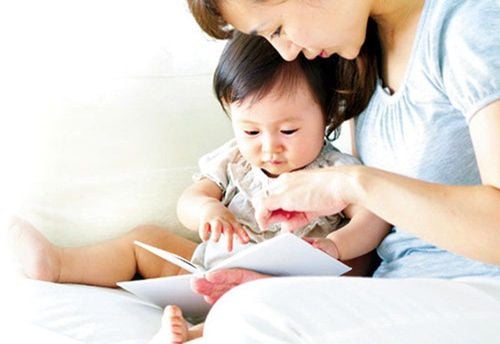This is an automatically translated article.
Posted by Master Nguyen Thi Yen - Pediatric Speech Therapist - Vinmec Time City International Hospital
Learning to speak is a long and natural process that begins from the moment a baby is born. Children will experience listening to the sound of words from their mother and those around them. From there, children will learn to imitate and make babbling sounds, words and phrases and then say them in sentences. It will be great if you understand your child and accompany him in every stage of development, especially in "learning to speak" in the first years of life. Let's explore together some tips to help you learn to talk with your baby from birth to 1 year old in the following article.
1.Learn to talk with your child from birth to 3 months old 1.1. Children's language-communication features At this stage, babies will have their first language experiences by listening to sounds from the voices of their mothers and caregivers. Your baby will turn his head to the direction of the sound or voice and respond by laughing or making small gurgles or “uh” sounds associated with wiggling his limbs.
The baby will cry or make different sounds for his different needs such as: hungry, tired, wet,... The baby shows interest and starts to respond more to speech sounds familiar from mother. The child shows interest in other people's faces and is already making eye contact.
1.2. What can parents or caregivers do? At this time, giving children the opportunity to listen to a variety of sounds, gentle and loving words not only helps them have valuable sound and speech experiences, but also helps foster father's affection. mother and child. Accordingly, parents can do the following things:
Sing to your child: Lullabies, rhymes, funny songs, ... are good suggestions for you. You can even start singing while your baby is still in the womb, and your baby will hear your voice. Talk to your child: Be around and talk to your child a lot. They won't be able to understand your words yet, but they will love hearing your voice and your smile. Children will also be interested in voices and like to look at other people when they are around and talking to them. In addition, it is essential to plan, arrange and establish a quiet area. Accordingly, parents need to limit TV, radio or other noise. This will help your baby focus more on listening to the sounds of the mother's and caregiver's voices.
2. Learn to talk with your baby from 3 to 6 months old 2.1. Children's language-communication characteristics Children will be more responsive to sounds. Your baby begins to "converse" by making eye contact and taking turns with adults. Your baby knows how to make a variety of sounds to express his feelings. Children may make babble sounds "da, da, da" to get other people's attention.
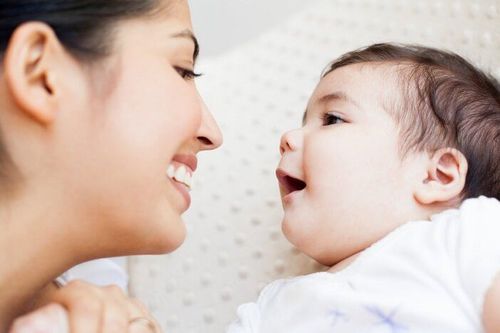
Giai đoạn trẻ 3-6 tháng tuổi có thể học nói với các âm bập bẹ
2.2. What can parents or caregivers do? At this stage, children are learning how to connect and talk to people. Therefore, encourage and create more opportunities for your baby to "communicate", by:
Hug your baby, get close to him and talk happily as if he is participating in the story and understands everything. what you say. When your baby is learning to speak, imitate all those sounds and try to give meaning to the sounds, making it meaningful. Always keep the conversation fun as your baby learns to talk. If your child tries to sound like you, smile, praise and encourage him or her a lot. SEE ALSO: Baby talking milestones
3. Learning to talk with your baby from 6 to 9 months old 3.1. Children's language-communication characteristics Although, at this stage, babies have not yet learned to speak animals, but children have begun to learn to speak, babble in a more diverse manner, use and combine more types of sounds when communicating. . Specifically:
Children can follow or look at familiar objects or people when their names are called. Children engage in two-way communication such as: playing with toys or playing with adults. Children love to imitate the sounds they hear. Children love interacting with others and can maintain interaction while playing. Children know how to change emotions according to the voice of adults. For example, laugh when you hear a happy voice, cry when you hear an angry voice. 3.2. What can parents or caregivers do? Children learn to speak animals in this stage are very rare, but parents can play with their children and explore the animal world together in the following ways:
Play games such as: Peek-a-boo, ants crawling, spiders... or rhythmic games that require some body movement will help children develop attention, hand-eye coordination while playing. Let children explore toys with different materials such as: rustling cloth books, dice, toys that make sounds, animal sounds... to help children have many sensory experiences. than. Be around and tell your child how he or she is exploring with toys. For example: the child presses down, the car horn beeps... Ask a few simple questions like “Where is the teddy bear?” and instruct the child to look in the direction of the object when he has not yet answered. This both helps prolong the conversation and helps children focus more attention.
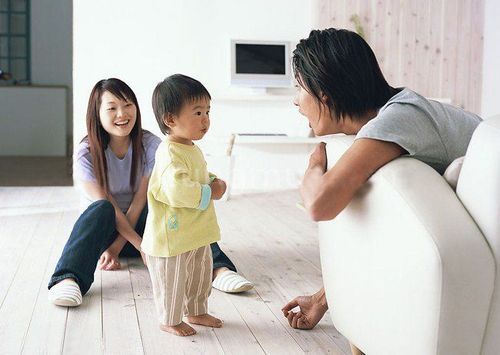
Từ 6 đến 9 tháng tuổi, cha mẹ có thể dạy con học nói cùng với các trò chơi
4. Learn to talk with your baby from 9 to 12 months old 4.1. Language - communication characteristics of children The period from 9-12 months old is the period when babies learn to speak, for example:
Children begin to use the sounds "ma ma", "da da" in a meaningful way to serve your child's needs. Children understand and follow simple requests such as: come here, give the ball to mom, etc. Children can make a long series of sounds for the purpose of communicating with others. Children imitate adult speech and can say 1 or 2 words. Babblers learn to speak to rhythmic sounds. Children will look for their mother or relatives when someone asks “Where is mom/relative?” When you show your child something new or interesting, he or she will follow your finger. In addition, children will use gestures such as: pointing, waving, shaking their head, ... combined with making sounds to let you know what they want. For example: a child raises his hand to ask for a hold, he gives you a toy to let you know he wants to play,...
4.2. What can parents or caregivers do? At this stage some babies have begun to learn to say animals, so parents or caregivers should:
Create lots of activities that are interesting, fun, and engaging. Use social interactive games such as: tickling, ant crawling, nu na nun, ... or short rhymes, songs children like and teach them to "talk tail wagging" according to the lyrics. Name all of your baby's gestures or actions. For example, if your baby raises his hand, you will say “carry”; children wave their hands, say "I don't like"... Enhance language comprehension by guiding children to participate and follow some simple requests related to daily activities, play activities Activities or games children like such as: kicking a ball, throwing a ball, giving the ball to mom,... Instructing your baby to perform some communication actions such as: waving goodbye, blowing kisses,... In addition, you You can create a family photo album and share it with your child. Introduce your child to family members. Children will love to see pictures and listen to you talk about each family member.
The most important thing of all the activities you do with your child is “Joy” – fun for both the child and you. Children will learn in the moments when they have fun with you. Try to find or come up with a fun game or song that your child loves and plays with. You can even "compose" your own song or story, as long as it's something your child likes. Thus, what you are doing is supporting your child to have great “learning to talk” experiences.
Please dial HOTLINE for more information or register for an appointment HERE. Download MyVinmec app to make appointments faster and to manage your bookings easily.




